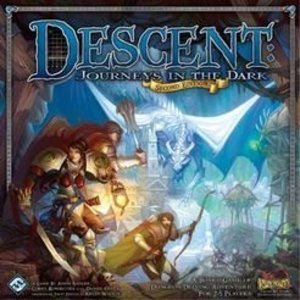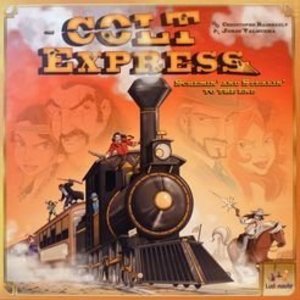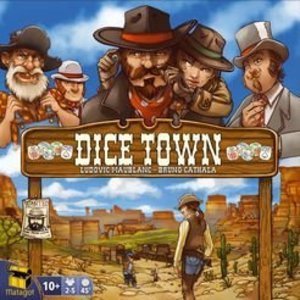
Never Have I Ever - Party game
Food & Drink and Entertainment
App
The perfect "I Have Never" app for the party. Use it before going to a party, while you're out, or...
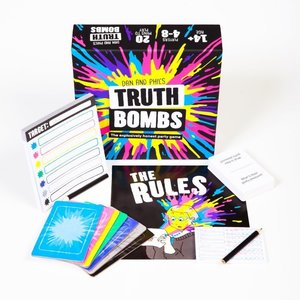
Truth Bombs
Tabletop Game Watch
The explosively honest party game that helps you find out a bit more about your friends Lay out...

Scotiabank Bancamóvil
Finance
App
Scotiabank Móvil is a modern, cutting-edge Scotiabank in Costa Rica application that lets you...
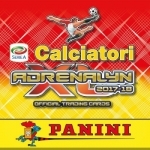
Calciatori Adrenalyn XL™ 2017-18
Sports and Games
App
Enjoy the new official app Adrenalyn XL™ Calciatori 2017-18, the only official trading card game...
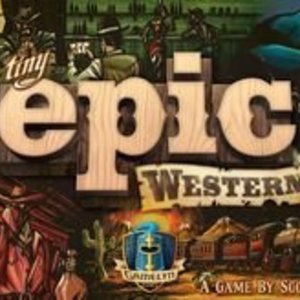
Tiny Epic Western
Tabletop Game
HOOK: Poker meets worker-placement DESCRIPTION: The West is growing day by day, and you’re...
Paul Kellett (118 KP) rated Descent: Journeys in the Dark (Second Edition) in Tabletop Games
May 4, 2019
With a couple of big-box and half a dozen small-box expansions, not to mention the various hero & monster packs, there is a ton of stuff available and if you own everything, you will be able to choose from 72 heroes with 22 different class decks; fight against 45 different monster types, and encounter around 15 lieutenants over a total of 182 different scenarios. That's plenty to keep you quiet for a while.
So many cards...
Descent: An Overview In The Dark
Descent is a scenario-based game where you work through a tree of different missions, choosing the next one based on whether the heroes or the Overlord worn the last. Each scenario will have specific objectives - anything from stealing an item and reaching the exit to interrogating prisoners and defeating a fearsome Lieutenant of the Overlord. Some of the monsters to be encountered are specified in the scenario text with other free groups able to be chosen from traits specific to that scenario. This gives some variety meaning you will never face exactly the same monsters if you replay the scenarios.
The good players choose a hero from the stack of basic skill types - Fighter, Healer, Scout or Mage and then choose from one of the many class decks for each type so the Fighter could be a Knight or a Berzerker, the Mage a Necromancer and the Healer a Bard, etc. These decks give each hero their skills and form their general strategy.
Meanwhile, the Overlord player chooses one of two Basic decks of cards that will form the base of his defence against the heroes. One deck is more about springing traps while the other has more things to enhance monster attacks. After choosing the basic deck, the Overlord can choose a specialist deck. These can be used to fine tune the Overlord's strategy and at first, only one card is available, the others will be purchased with experience points after each scenario. Finally, if the relevant expansion packs are available, the Overlord can choose a Lieutenant deck which adds further depth to his strategy and also offers the chance to bring a powerful figure into play later in the campaign.
Solo? How So? Redjak has the answer.
With all that going on, it sounds like a fairly daunting if not impossible task to play a solo game of Descent but a fan going by the name of Redjak created two card-driven AI decks - Redjak's Automated Monster Variant (RAMV) and Redjak's Automated Overlord Variant (RAOV). These decks both allow a player, or group of players to play the game as a fully co-operative experience with the cards replacing the Overlord player.
I will say that it is preferable if you have a grasp of the basic rules before jumping into these variants as there can be a lot going on if you are trying to learn the game and the solo rules at the same time. It's probably best to only choose two heroes at first as playing four heroes is more involved but ultimately more rewarding.
These variants are available to download and print out and are also available from the Printer Studio website if you search, although if you are not in the US, then shipping gets expensive.
RAMV
The Monster AI deck is the simpler of the two AI's, being just concerned with the monster actions and leaving out all the Overlord's cards. I haven't played much with this variant but the rules are fairly straightforward. You will set up 4 decks - an Event deck, a Dark Influence deck, a Conditions deck and a Monster deck.
After choosing a scenario to play, you draw cards from the Monster deck, finding ones with icons matching those of the current scenario. This keeps things random and you will always have different things to fight. The selected monster groups will then be placed in "Teams" underneath a row of team cards that will give them their activation order. Finally you will place the encounter objective card for the current scenario. This will give you specific things for each monster group to focus on in terms of stopping you from winning.
You will take your turn alternating hero and monster groups, drawing cards at various points when the monsters should react to attacks, certain scenario triggers ond other in-game events.
It is a fairly simple system but it works really well, giving a solid, straightforward dungeon crawl feel of exploring a map and fighting monsters while trying to complete your quest. Definitely a good starting point and good if you want a 'quick' dungeon crawl.
RAOV
This is the meat, the full experience. Although daunting at first, if you are familiar with the game rules (and have possibly played RAMV a bit), then it will make sense once you get stuck in.
RAOV differs over RAMV in only having one deck, but the rule book is more in depth describing how everything gets played.
You set up as normal, decide on what decks the Overlord will be playing with, draw his starting hand of cards placing them face up on the table. (This variant uses D10 dice anytime you have to make selections)
and take all your heroes actions. If at any point one of your actions would trigger an Overlord card, then that card is played and discarded. Having an open hand means that there are fewer surprises and the Overlord cant be as evil as a human player would be, but it is still tricky and knowing what cards might trigger forces you to think about your strategy in a different way.
Once the heroes have all activated, then the Overlord take its turn, playing any cards that would trigger at the start of the turn. Then, you flip over the top card of the AI deck and activate the first monster group. These cards have a primary target, shown by the corresponding hero symbol and several secondary targets. This gives the monster a focus for its actions. The main text of the card is a list of actions and essentially you work down the list doing whatever actions you are able. Each monster that activates will draw a new card and follow it's orders.
That in a nutshell is it. The Overlord's cards will trigger at the first available opportunity and the monsters will follow a list of options. Once you get used to it, it flows really well and doesn't feel too fiddly at all.
An Open Dungeon
As well as the two AI variants, Redjak also created Delven Deep - a deck of cards each displaying a different map tile that you can use to play a completely randomly generated dungeon crawl. I have yet to try this out, but it is another option if you don't fancy playing through a scripted scenario and just want to explore a random map, killing things.
For The Digital Generation
Fantasy Flight Games have also released an official, free companion app on Android, Steam and IOS that will take control of the Overlord player. This app comes with, I think 2 campaigns - a short training story and a larger, full campaign. Other campaigns a random dungeon generator are available to purchase in the app. None of the printed scenarios are playable using this app and it doesn't use any of the overlord cards, plot decks, event cards or encounter cards.
I will say that I am not a fan of apps for board games and it was actually this app in particular that soured me on the whole idea. Many people really enjoy this app and it has breathed a new lease of life into the game, but unfortunately on my first playthrough, it decided to crash near to the end of a campaign and I essentially lost 6 hours of gaming. I would have had to start all over again from the beginning. That was not a fun experience and put me off completely.
The app borrows heavily from Redjak's work, giving you a list of options to work through when activating the monsters, and various other triggers. Unlike the printed scenarios, all the maps in the digital stories are hidden until you explore them, so you never know what you will encounter. Also, there is a hidden timer in the program that means if you take too long exploring, fighting or whatever, then the game will start throwing nastier and nastier events at you. This makes the game much more of a race than its cardboard cousin and ramps up the difficulty at a fast pace making you feel like you never have enough time to do what you want.
In My opinion, RAOV is the best way to play Descent solo. It uses absolutely everything in the box and gives the most realistic feeling of playing the complete game.
Purple Phoenix Games (2266 KP) rated Colt Express in Tabletop Games
Feb 6, 2020
Disclaimer: There are many expansions for Colt Express. I do not have any of them, nor do I have any gameplay experience with any of them. If and when I do get them added into my base game, I will either amend this review or write a new one! – L
Colt Express is a game of action programming in which players are trying to accumulate the most treasure over 5 rounds of play. Each round consists of 2 phases – Schemin’ and Stealin’. During the Schemin’ phase, players select action cards from their hand and play them to the center of the table in turn order. Possible actions are: Move between cars, Change floors, Shoot, Rob, or Move the Marshall. Depending on the round requirements, cards will be played either face-up or face-down. Face-up cards allow your opponents to see what you are programming and gives everyone a chance to counteract those actions, while the face-down cards leave some mystery to your strategy and your ultimate plan for victory. During the Stealin’ phase, the action cards are actually performed in the same order in which they were played. A new round card is then revealed, and players start the next Schemin’ phase. After 5 rounds, the player who has accumulated the most loot is the winner!
I have to start by saying that I generally do not like action programming games. I like to have a clear step-by-step strategy that I am able to adjust and adapt based on the current play situations. In action programming games, that really isn’t possible because you have to commit to your chosen actions before they are played out. That makes these games more chaotic than I would like because your carefully thought-out plans can be easily compromised by one single action of an opponent, throwing your strategy out the window. That being said, I think Colt Express approaches action programming in a unique way that takes the game to the next level. How? By varying whether your programmed actions are public or private knowledge. Depending on the round, you play cards face-up or face-down to the center of the table. As stated earlier, face-up cards give your opponents a peek at your strategy while your face-down cards keep some mystery in your plans. I really like this approach because it makes the game less luck-driven and gives players the opportunity to play with some semblance of strategy. Instead of focusing on just your actions and hoping that they aren’t inadvertently compromised, you get the chance to see some of what your opponents are planning and adjust your gameplay based on that. Yes, there will always be some twists and surprises that you didn’t see coming, but you’ve got to think beyond your strategy and keep yourself safe from other players. The added element of partial hidden-information makes Colt Express a more exciting game for me.
Let’s talk components next. I think the game components of Colt Express make the game so neat and cute at the same time. Colt Express is played on an actual 3D cardboard train! Each player has a meeple in their color, and you get to physically move your merson around the train according to your programmed actions. I think it works great by adding that spacial element to help players visualize their movement. The components themselves are pretty good quality, in my opinion. The train and the loot tokens are made of nice sturdy cardboard, and I know they will hold up to lots of plays. And don’t sweat it – the train can be stored fully-assembled in the box! That minimizes the time required for setup, and lets you get right to playing.
All in all, I think Colt Express is a fun game that requires strategy, but is not a brain-burner. There’s still enough luck involved to keep everyone on their toes, and the ensuing quasi-chaos really make the game feel like a train heist. If you haven’t tried Colt Express, I would recommend you do. It’s not on my list of favorite games, but it’s one that I like to bring out every so often! Purple Phoenix Games gives Colt Express a high-speed 15 / 24.
Purple Phoenix Games (2266 KP) rated Sorrim in Tabletop Games
Sep 2, 2020
Sorrim is a competitive 1v1 (or 2v2 or 3v3) card game for two players. A player wins once all of their opponent’s fighters have been knocked out. Fighters are all of differing magic (element) types and therefore can only be equipped with sigils (spells and attacks) of matching type. Whittling the opposing fighters’ health to zero will award triumphant players victory!
DISCLAIMER: We were provided a copy of this game for the purposes of this review. These are retail copy components, and all copies will have components matching these shown. Also, it is not my intention to detail every rule in the game, but to give our readers an idea of how the game plays. You are invited to order from The Game Crafter directly, your FLGS, or purchase through any retailers stocking it after it is released. -T
To setup the game, separate and shuffle the fighter deck and sigil deck. Deal each player a set of colored chips to keep track of values for each fighter. Fighter cards will be flipped and revealed at the beginning of the conflict. Roll the die to determine starting player and the game can begin! Note: this preview will be using the introductory 1v1 setup, though games can also be played on 2v2 and 3v3 modes with slightly different rules.
Each fighter will have their own stats to track as shown on their cards: Might, Altruism, Trickery, Health. Fighters will also possess special abilities printed on their cards to be used during the game.
Sigil cards will show either the word “Passive,” which will be active throughout the game or triggered by a special event, or they will show a group of numbers to indicate the required rolls needed to launch a successful attack.
On a player’s turn they will consult the fighter’s passive abilities to see if they will trigger. Next, the player will roll the die and compare with their cards to cast a sigil (spell). If the rolled result matches a sigil it may be cast. Opponents will check any passive abilities and adjust Health by amount of the fighter’s Might. Play continues in this fashion until one player’s fighters are all reduced to zero Health. That player loses and the winner must then mock the loser until the next game played.
Components. This game consists of some cards, a die, and some translucent chips. Each copy will be provided a link to the designer’s document to print off the rulebook and the stat sheets to track fighter stats as they change throughout the game. The cards are acceptable quality, the die is just an entry-level normal d6 (we were sent green with white ink), and the chips are TiddlyWink style. Everything is… fine. The art leaves some to be desired, especially in this era of gaming where art can elevate a good game to great, and a great game to amazing. This art does not help Sorrim. It’s not terrible, but it’s not wonderful either. Not my style.
All in all, the game is actually pretty decent. It is very quick-playing, especially the 1v1 mode, and after playing one game you kinda want to try some of the other fighter and sigil combinations. Any time a game makes you want to play more, that’s a great thing.
With Sorrim, my final thoughts are that it is a good game. I wouldn’t call it great, but there are several interesting mechanics and the variability/replayability built in is quite good. There are lots of two player battle card games, and Sorrim brings something a little different. The theme is enjoyable, and the gameplay is fast. There isn’t a ton of strategy involved as turns are dependent on rolling a number that matches your sigil cards, but it does deliver an easy-feeling, low-stress battle game for two. For some reason you just don’t feel annoyed when you lose, as can be the case with other PvP games. If you are looking for something in your collection that gives you this quick gameplay and is relatively rules-light, head over to The Game Crafter and give Sorrim a try.
Purple Phoenix Games (2266 KP) rated Dice Town in Tabletop Games
Aug 13, 2019 (Updated Jun 24, 2021)
Dice Town is a rootin’-tootin’ dice chuckin’ game relying heavily on poker and card majority. Each player is trying to gain the most money, gold nuggets, and property cards to beef up their VP totals once the game ends to become the baddest dude in the West.
To setup, place the town board in the middle of the table and populate its different areas with their components: the Gold Mine receives all the gold nuggets, the Bank receives $3 initially, the General Store receives all the cards of its deck with three property cards will be displayed next to Town Hall, and Doc Badluck will receive its deck with two cards displayed. Each player will receive a dice cup, five dice, and $8 to start. The youngest player received the Sheriff badge card and the game may begin!
Turns are taken simultaneously among all players. Players will roll their dice using the dice cup and choose one result to keep. They may keep more dice by paying $1 for each die kept, or they may pay $1 to keep zero dice and try again. Players are attempting to roll the best poker hand during these turns to set themselves up for the next phase of the game – actions.
Once all players are finished keeping dice and building poker hands, they move to the actions phase. Beginning with the Gold Mine and moving left to right, each area of town will be resolved based on the players’ results. The player with the most 9s rolled will take nuggets from the Gold Mine equal to the number of 9s rolled. The player with the most 10s will take the money at the bank. Most Jacks will draw General Store cards (that can mess with other players or help the holder) equal to the number of Jacks rolled and choose one card to keep. The most Queens will summon a lady at the Saloon to help steal any General Store or property card from another player. Most Kings will be the new Sheriff in town and will break all ties (and also can be bribed). Whomever was able to build the best poker hand will be able to claim the property card at the bottom of the display and one additional property for each Ace rolled. Finally, if a player was not able to win anything up to this point, they will be able to claim a card from Doc Badluck which can be very powerful.
Play continues in this fashion until either the supply of gold nuggets has run dry or all of the property cards have been doled out. Players will score VPs for nuggets, certain General Store cards, one VP per $2 cash, $5 from being Sheriff at the game end, and VP printed on property cards owned. Once the winner is determined, that player must now challenge the losing players to a duel at high noon. Or just gloat a lot.
Components. As you can see in the photos, the component quality is excellent, as with most Matagot titles. The dice cups are sturdy plastic, the embossed poker dice are awesome, the gold nuggets are great as well! I like the quirky cartoony art style. What I do not like about Dice Town components are the cards. They are super glossy, and that’s heck for taking photos and I just don’t enjoy the feel of them as much as the nice linen-finishes. It doesn’t break the game for me or make me enjoy playing it less, I just prefer other types of finishes on cards.
I really like Dice Town. I have always had a great time when playing, and I have even acquired it twice now. I sold my first edition copy via a BGG auction (I was addicted to auctions several years back) and missed it, so I was able to grab a second edition copy last year. I haven’t regretted reacquiring it and though I rated it a 4 I don’t see this ever leaving my collection again. I love the American West theme, and I love the way the dice cups feel and sound as players are slamming them on the table. But also I hate the way the dice cups sound as players are slamming them on the table when my children are trying to sleep or without some type of buffer material between the cups and a hard table top.
The second edition printing is definitely the way to go when deciding whether to purchase Dice Town. Everything is upgraded, and the rules have been tweaked a bit for the better. I don’t really know why I like American West in my board games so much because I can’t stand Western style movies or books, but I can’t get enough of them in my games. If you and I share preferences on games and themes and components, try to grab a copy of Dice Town. You will certain like it quite a bit. We do. Purple Phoenix Games give this one a 12 / 18. While that doesn’t seem like a great score, we would rather have access to it than not. And with so many games out there, earning a place on my shelf is a big deal for a game. So enjoy!

